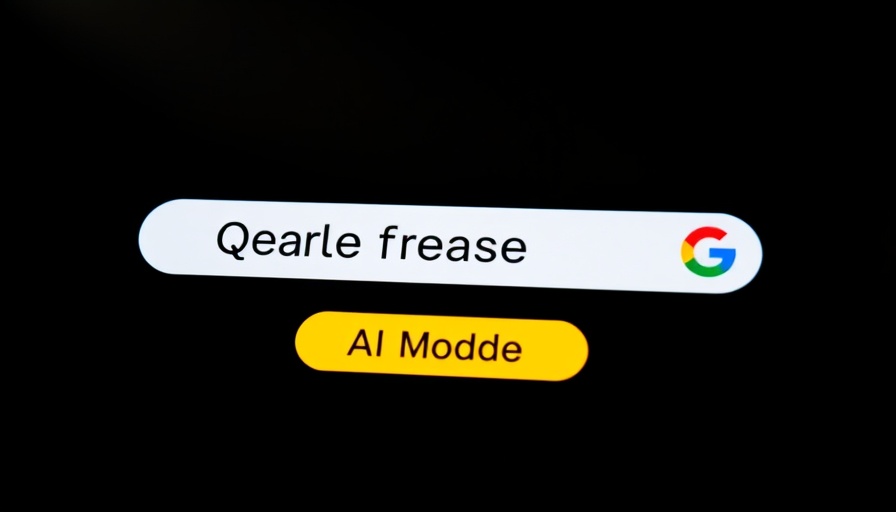
Understanding Google’s AI Mode Discrepancies
In the evolving landscape of search technologies, the recent observations surrounding Google's AI Mode reveal significant insights that could impact small business owners and marketers alike. These insights come in the wake of Jes Scholz's discovery that Google presents different sources for the same query depending on the device and browser used. Imagine searching for your company's name or a product and getting a varied set of results just because of where you are conducting the search. This inconsistency not only highlights the dynamic nature of search algorithms but also raises crucial questions about how businesses can optimize their online presence.
Dynamic Results: An Eye-Opener for Online Strategies
Google’s AI Mode reflects the increasing sophistication of how users interact with search engines. Currently, many small businesses rely on standard SEO strategies to boost their visibility across platforms. However, the discrepancy in search results between desktop and mobile, or even between different browsers, indicates that optimizing for AI visibility may require a more nuanced tactic.
As Scholz notes, the sources cited may vary significantly based on the AI mode utilized. This evolving understanding ought to prompt marketers to focus their efforts not just on keyword strategies but also on understanding how their audience engages with various platforms. By experimenting with different browsers and devices, businesses can gain insights into the visibility patterns of their content, allowing them to tailor their online marketing strategies more effectively.
Steps to Adapt Your Marketing Approach
To navigate the intricacies of Google’s AI Mode effectively, businesses should implement several strategic actions. Firstly, conduct repeated searches on different devices and browsers to identify how your site appears across various platforms. This action will help highlight potential gaps in visibility.
Secondly, enhance mobile-optimized content. Considering that users increasingly rely on mobile devices for searches, ensuring that your website is responsive can make a considerable difference in your ranking.
Engaging with AI tools that facilitate an understanding of search trends could also prove beneficial. These tools can analyze results and suggest strategies based on real-time data, empowering marketers to stay ahead.
The Broader Impact: Why This Matters to Your Business
Understanding Google’s AI Mode discrepancies represents more than just adapting marketing practices. It embodies a shift towards a more personalized marketing approach, considering how individuals interact with technology. As Google's algorithms evolve, so too can the perspectives of consumers, creating unique touchpoints for engagement.
For small businesses, this presents not just a challenge but an opportunity to differentiate themselves. By recognizing and adapting to these differences, businesses can cultivate more meaningful connections with their audience. Imagine the power of presenting information in a manner that resonates best with your actual customers, thereby driving engagement and ultimately sales.
Your Next Steps in the AI Marketing Landscape
With these insights in mind, small business owners and marketers are encouraged to think creatively about how they position themselves in Google’s AI-driven marketplace. Staying informed about algorithm updates and technological advancements will be crucial. Taking actionable steps, such as regularly updating content and employing SEO tools, can enhance your business's overall online presence.
The world of online marketing is dynamic and always changing, and embracing these changes will ensure that your brand not only keeps up but thrives.
Conclusion: Maximize Your AI SEO Potential
Ultimately, understanding the way Google’s AI Mode displays information can significantly impact your marketing strategies. By staying adaptable and informed, businesses can leverage these insights to create marketing approaches that ensure maximum visibility and engagement. Start experimenting with your content across different platforms, track the results, and refine your strategies accordingly to maximize your AI SEO potential. The journey towards effectively engaging with your audience now begins.
 Add Row
Add Row  Add
Add 




Write A Comment